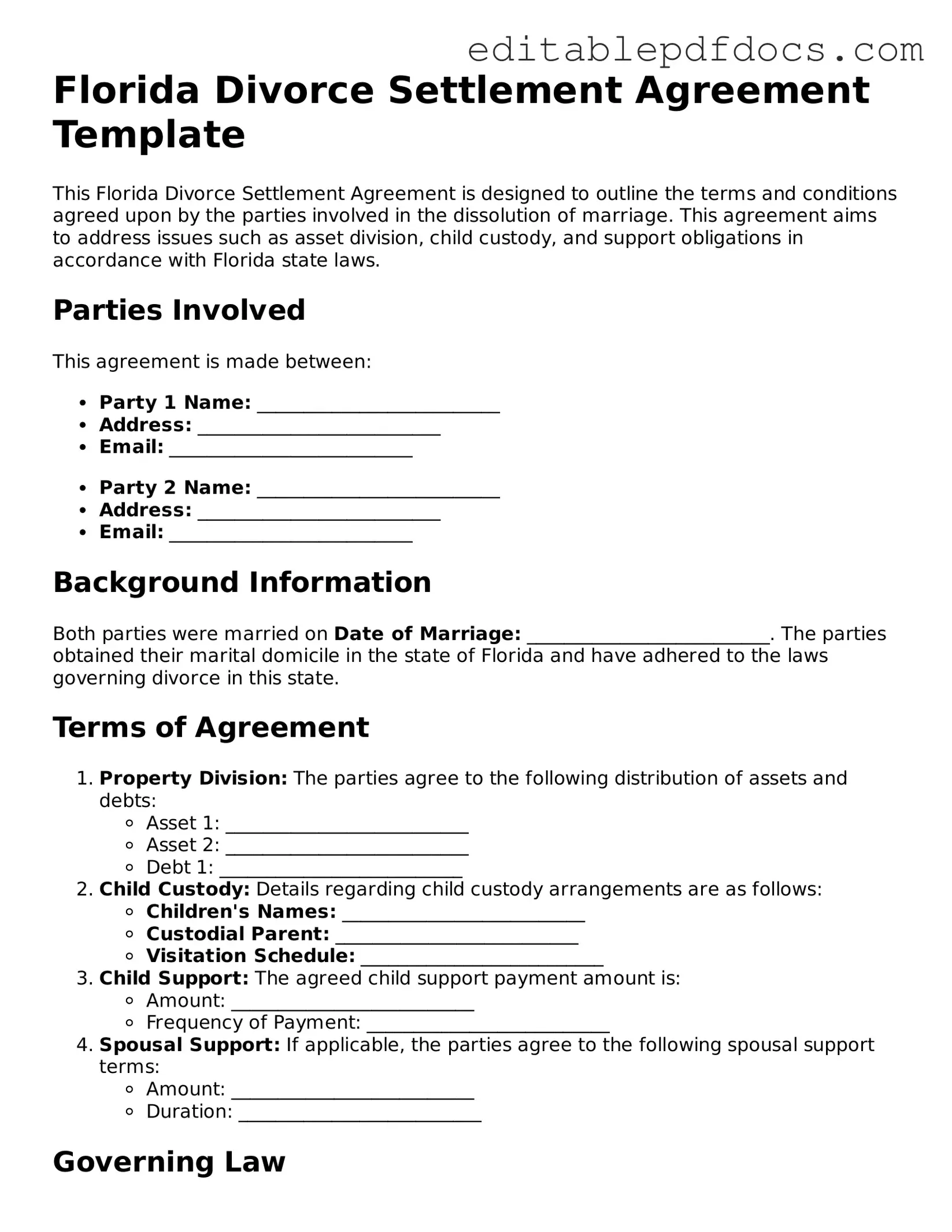Filling out the Florida Divorce Settlement Agreement form can be a daunting task. Many individuals make common mistakes that can lead to delays or complications in their divorce proceedings. Awareness of these pitfalls can help ensure a smoother process.
One frequent error is incomplete information. Some individuals neglect to fill in all required fields, which can result in the court rejecting the form. It’s essential to provide complete details about assets, debts, and any agreements regarding child custody and support.
Another mistake involves failing to specify terms clearly. Ambiguity can lead to misunderstandings later on. For instance, vague language about the division of property or visitation schedules may cause disputes. Clear and precise wording helps prevent future conflicts.
Many people also overlook not having the agreement notarized. A signature alone may not suffice. Notarization adds an extra layer of authenticity, ensuring that all parties genuinely agree to the terms outlined in the document.
Additionally, some individuals may forget to consider tax implications of asset division. For example, transferring certain assets might have tax consequences that could impact both parties financially. Consulting with a financial advisor can provide clarity on these issues.
Another common mistake is not reviewing the form thoroughly before submission. Errors in spelling, dates, or figures can lead to unnecessary complications. Taking the time to double-check the document can save significant time and stress later.
Finally, individuals often neglect to keep copies of their submitted forms. Having a personal record of what was filed is crucial. It provides a reference point for both parties and can be helpful in case of future disputes.
